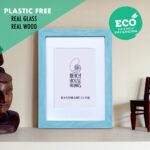I. Understanding Upcycling Art: Definition and Importance
II. Creative Techniques and Materials Used in Upcycling Art
III. Benefits of Upcycling Art for the Environment and Community
Understanding Upcycling Art: Definition and Importance
Hey there! Have you ever looked at an old item and thought, “I could do something amazing with that”? That’s the essence of upcycling art! It’s an exciting blend of creativity and sustainability that allows us to turn what some might consider trash into treasure. But what exactly is upcycling art and why is it so important? Let’s dive in!
What is Upcycling Art?
Upcycling art is the process of transforming discarded materials into new, artistic creations. Unlike recycling, which typically breaks down materials to create new products, upcycling takes existing items—those that are often overlooked or deemed unusable—and gives them a fresh purpose. This could be anything from turning old wooden pallets into beautiful furniture to crafting stunning jewelry from scrap metal.
The Importance of Upcycling Art
Now, you might be wondering why upcycling art matters. Well, it plays a significant role in several areas:
- Environmental Impact: In today’s world, we’re producing more waste than ever before. By upcycling, we’re reducing the amount of rubbish that ends up in landfills. Every upcycled piece of art represents a step toward a more sustainable planet.
- Creativity and Innovation: Upcycling encourages creative thinking. Artists can experiment with different materials and techniques, discovering unique ways to express themselves. The limit is only your imagination!
- Community Engagement: Upcycling art has a wonderful way of bringing people together. Workshops and community projects often arise around this practice, fostering collaboration and learning among participants.
Why Embrace Upcycling Art?
Engaging in upcycling art isn’t just about creating something beautiful; it’s also about embracing a mindset that values resourcefulness. Here are a few reasons why you might consider diving into this creative endeavor:
- Personal Fulfillment: There’s something incredibly rewarding about creating art from materials that would otherwise be thrown away. You’re not just making art; you’re telling a story with each piece.
- Unique Pieces: Every upcycled creation is one-of-a-kind. You won’t find another exactly like it, making your art deeply personal and distinctive.
- Inspiration for Others: Your upcycling efforts can inspire friends, family, or even your community to think creatively about waste. You might just spark a movement!
In conclusion, upcycling art is more than just a trendy craft; it’s a powerful way to contribute positively to our world. By giving new life to old items, we celebrate creativity, promote sustainability, and connect with one another. So, the next time you stumble upon a discarded item, don’t toss it aside! Instead, think about how it could be transformed into something amazing!
Creative Techniques and Materials Used in Upcycling Art
When it comes to upcycling art, the possibilities are as vast as your imagination! This creative practice not only breathes new life into forgotten items but also encourages sustainability in a fun and artistic way. So, let’s dive into some of the most popular techniques and materials that artists use to create their stunning upcycled masterpieces.
Materials That Spark Creativity
The beauty of upcycling lies in the diverse range of materials you can use. Here are some favorites:
- Wood: Old furniture, pallets, and scraps can be transformed into furniture, sculptures, or decorative pieces. Just imagine turning a worn-out chair into a chic plant stand!
- Fabric: Think old clothes, curtains, and linens. These can be stitched into quilts, bags, or even wall art. That beloved shirt you no longer wear? It could become a cozy throw pillow!
- Glass: Jars, bottles, and broken glass can find a new purpose as vases, candle holders, or mosaics. There’s something magical about turning something so common into something extraordinary.
- Metal: Cans, old utensils, and scrap metal can be repurposed into striking sculptures or functional art pieces. Ever seen a wind chime made from cutlery? It’s both quirky and beautiful!
- Paper: Magazines, newspapers, and cardboard can be woven, cut, or layered to make collages, sculptures, and even 3D models. The next time you have leftover wrapping paper, think of the art you could create!
Engaging Techniques to Try
Now that we know what materials to use, let’s explore some engaging techniques that will elevate your upcycling game:
- Collage: This technique involves layering different materials to create a cohesive artwork. It’s a fantastic way to combine textures and colors. Just grab some glue, scissors, and your favorite materials, and let your creativity flow!
- Painting: Use acrylics or spray paint to revitalize old items. A simple coat of paint can make a world of difference. And don’t forget about stencils for added flair—great for personalizing your pieces!
- Decoupage: Perfect for adding a decorative touch, this technique involves gluing paper cutouts onto surfaces and sealing them with a finish. It’s an excellent way to add a personal touch to furniture or decor.
- Sculpting: If you’re feeling adventurous, try assembling found objects into sculptures. This technique invites you to think outside the box and use unexpected items in innovative ways. Who knows what kind of quirky creatures you may create?
- Weaving: Use fabric strips, paper, or even plastic bags to create beautiful woven pieces like mats or wall hangings. This method is not only visually appealing but also satisfying to create!
Embracing upcycling art is all about experimentation and fun. Don’t be afraid to mix and match materials and techniques. The most important thing is to enjoy the process and let your creativity shine! So gather some supplies, get your hands a little dirty, and discover the joy of transforming the old into something beautifully new.
Benefits of Upcycling Art for the Environment and Community
Upcycling art isn’t just about creating something beautiful from what might otherwise be considered waste—it’s a powerful movement that brings a host of benefits to both the environment and the community. Let’s dive into some of these advantages and see how upcycling art can make a positive impact!
1. Environmental Benefits
First and foremost, upcycling is a champion for our planet. By transforming discarded items into art, we significantly reduce waste. Here are a few key environmental benefits:
- Waste Reduction: Upcycling helps divert materials from landfills, where they would have taken years to decompose. By repurposing these items, we minimize the amount of waste we produce.
- Conservation of Resources: Creating new products often requires the extraction of raw materials, which can be detrimental to the environment. Upcycling reduces the demand for new resources, leading to less deforestation, mining, and pollution.
- Lower Carbon Footprint: By using existing materials, we decrease the energy required for manufacturing new items. This reduction contributes to lower greenhouse gas emissions, which is vital for combating climate change.
2. Community Engagement
Beyond environmental benefits, upcycling art fosters community connection and creativity. Here’s how:
- Creativity and Skill Development: Upcycling encourages individuals to think creatively and develop new skills. Workshops and community art projects can provide valuable learning experiences that inspire innovation.
- Community Cohesion: Engaging in upcycling initiatives often brings people together. Community art projects can become a focal point for collaboration, allowing participants to bond over shared goals and interests.
- Local Economy Boost: By supporting local artists and artisans who create upcycled art, communities can stimulate their economies. Buying local not only supports your neighbors but also promotes sustainable practices.
3. Psychological and Social Benefits
Creating and appreciating upcycled art can also lead to positive mental health outcomes:
- Therapeutic Outlet: Engaging in artistic activities can be a wonderful form of therapy. Upcycling allows individuals to express themselves, release stress, and find joy in creativity.
- Inspiring Change: Upcycled art often carries a message about sustainability and conscious living. This can raise awareness and inspire others to think more critically about their consumption habits and waste.
- Sense of Accomplishment: Transforming what might be considered “junk” into a beautiful piece of art instills a sense of achievement. This accomplishment can boost self-esteem and encourage further creative endeavors.
Conclusion
In a nutshell, upcycling art is a multifaceted approach that benefits not just our environment but also our communities and individual well-being. By engaging in this creative practice, we can contribute to a healthier planet while also fostering connection, creativity, and personal growth. So next time you come across an old item, consider turning it into something extraordinary; your community—and the Earth—will thank you!










Comments